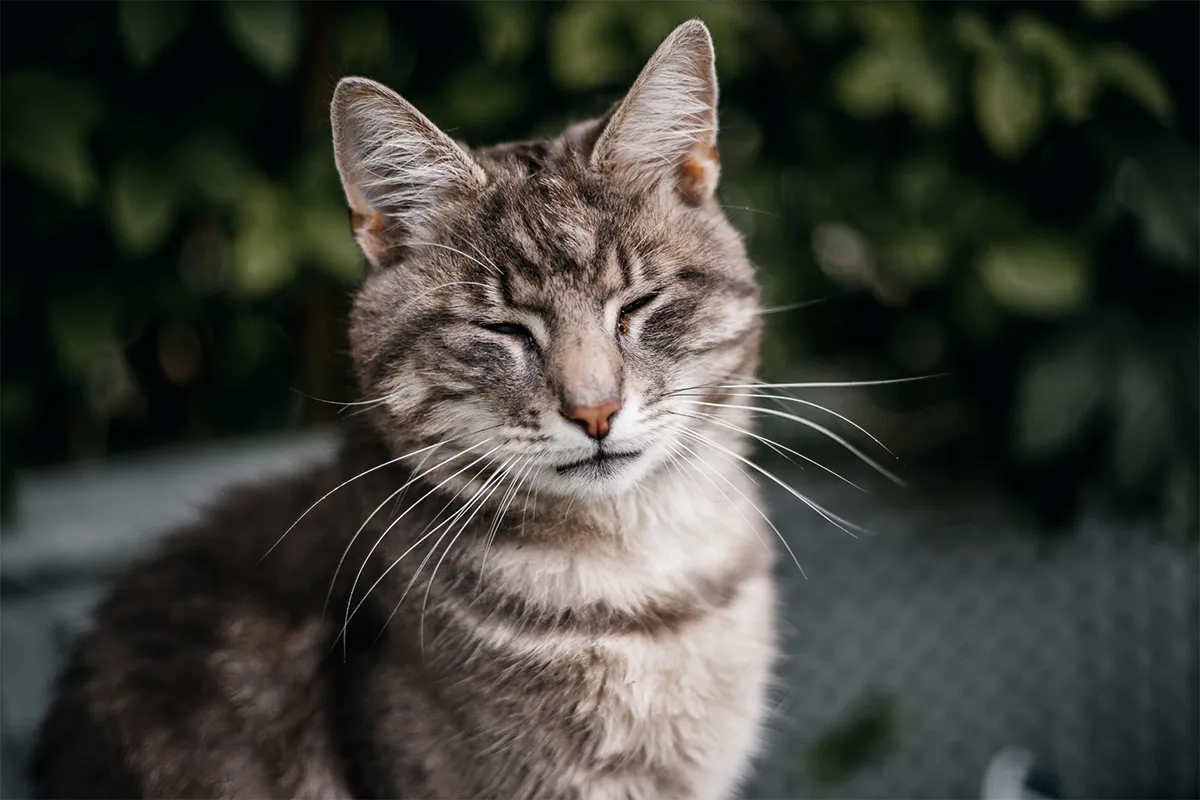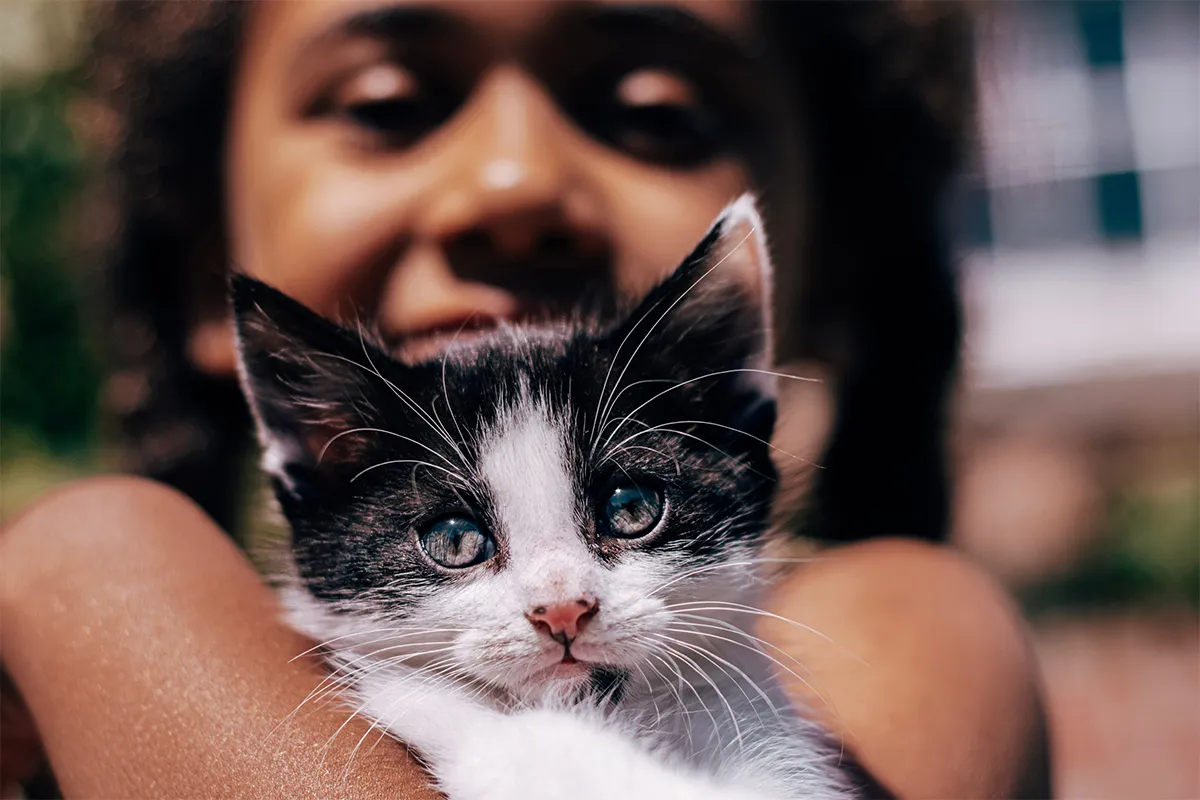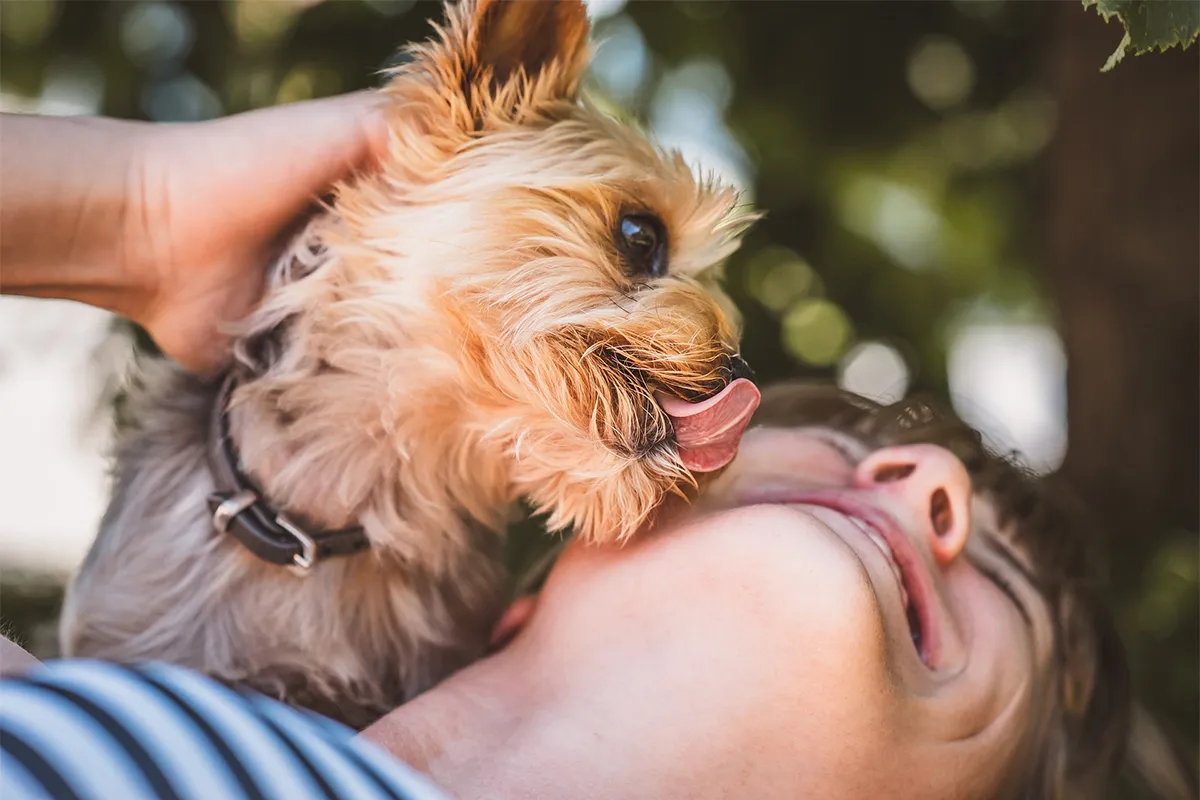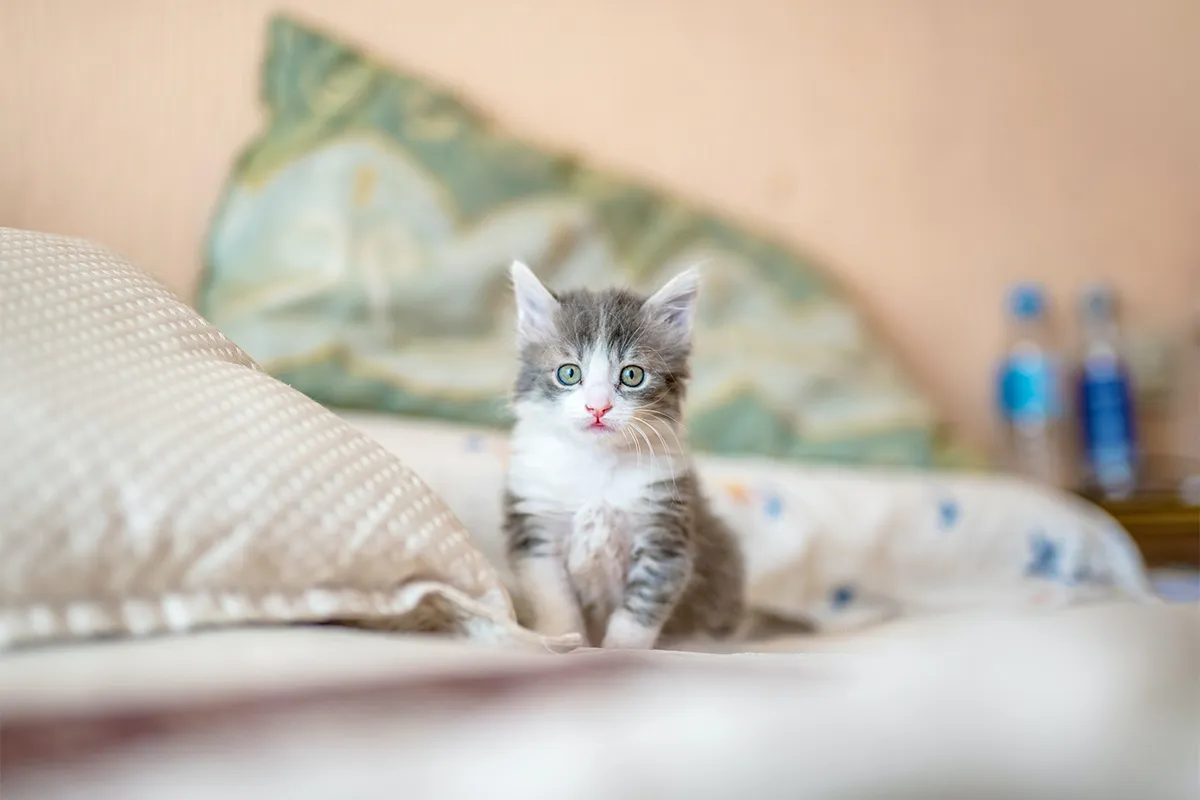Cats purring can be incredibly endearing, but did you know that these feline companions can produce up to 100 different sounds? While they primarily use body language to communicate, their vocalization abilities are truly impressive. One of their most distinctive sounds is purring, which can occur in various situations and convey different moods.
So, if you’re wondering why your cat purrs and bites, it’s essential to understand what purring means and what your furry friend is trying to communicate when making this sound. You’ll be pleased to know that cats typically purr when they feel happy, relaxed, and comfortable in their environment. They may purr when you pet them in their favorite spots or when they’re in deep slumber in a place where they feel secure.
However, cats purr in different ways and under various circumstances to express a wide range of emotions. In this article, we’ll focus on the primary reasons why cats purr and may sometimes bite their owners and others. Keep reading to learn more.
Table of Contents:
- Playful or Exploratory Behavior
- Why Does My Cat Purr and Bite During Play?
- Premature Separation
- Behavioral Issues and Inadvertent Training
- Stress or Discomfort
- Seeking Attention or Asking for Help
- Conclusion

Playful or Exploratory Behavior
To answer the question of why a cat purrs and bites, you need to consider the type and intensity of the bite and the context in which both purring and biting occur. For instance, a cat gently nibbling on your hand during play has a different intention than a cat resorting to aggressive responses like biting or scratching when feeling scared, vulnerable, or threatened. To avoid misunderstandings in cat communication, it’s crucial to have a basic understanding of cat body language and the key signs of an escalating aggressive behavior. One of the situations where this behavior is most commonly observed is during play.
Why Does My Cat Purr and Bite During Play?
This behavior is particularly common in kittens. They use their entire bodies and senses, including their mouths, teeth, and taste, to explore and familiarize themselves with their surroundings. This exploration is primarily playful, as they engage with their mother and siblings. During this period, purring plays a vital role in the communication of newborn kittens with their mother. The mother cat purrs to guide her kittens during nursing and to convey a sense of calm and security crucial for their cognitive, social, and emotional development.
As the kittens grow, they start to imitate this purring sound, making it one of their primary means of communication with their mother. You’ll notice that kittens purr while nursing to express comfort and satisfaction, but they also use purring with a different tone and frequency when they need assistance because they are scared, hungry, or have other needs. So, it’s entirely natural for a kitten to purr and bite as a way to express themselves and explore the world around them.
Premature Separation
The mother cat is responsible for teaching her kittens fundamental social behaviors, including setting boundaries in play and other actions like biting and scratching. Consequently, when a cat is separated prematurely from its mother, it is more likely to exceed boundaries during play, such as biting or scratching. It may also resort to aggression as a response when it feels insecure because it hasn’t had the opportunity to learn more appropriate ways to manage its emotions and cope with the various positive and negative situations and stimuli it will encounter in life. For all these reasons, it’s essential for kittens to remain with their mother and littermates until they reach the weaning age to prevent behavior problems and learning difficulties in adulthood.
Behavioral Issues and Inadvertent Training
Another reason a cat may purr and bite during play is related to inadequate training or unintentional reinforcement by the owner. Imagine adopting a kitten that naturally exhibits exploratory behaviors, as mentioned earlier, along with the typical hunting instincts seen in all felines, even in companion cats. At first, it might be endearing when your cat playfully nibbles your fingers or ankles while purring, as it seems like an enjoyable activity. However, if this behavior is repeatedly allowed to continue, the kitten may grow into an adult cat that doesn’t understand the boundaries of play or biting. This can result in a more powerful bite that is no longer cute and can even become painful.
So, what can you do to prevent this behavior from persisting? The solution is straightforward: don’t encourage behaviors in a kitten that you don’t want to see in its adult life. In other words, if you don’t want your cat to bite you during play, avoid using your hands or feet as “prey” in games that simulate a hunting context. Instead, opt for appropriate toys suitable for your cat’s size and age for such play. Additionally, whenever your cat starts to bite during a game, firmly say “NO!” and immediately stop the game. Offer a toy that can be bitten to make it clear that this behavior is unacceptable and should not be repeated. When your furry friend plays correctly (without scratching or biting), reward the behavior to reinforce it and continue promoting their learning.
Stress or Discomfort
When a cat purrs in a uniform and rhythmic manner, it often indicates that the cat feels bothered or stressed by something in its environment. In other words, it’s a way of saying, “Enough, I don’t like this.” If you can’t interpret this message or the cat’s prior warning signs to stop a certain activity, it’s likely that, as the cat becomes increasingly uncomfortable or stressed, it may resort to a more clear and extreme signal, such as a bite or scratch, to get you to stop.
One of the most obvious examples is when cats purr and bite when their owners pet them in sensitive areas where they prefer not to be touched, particularly the belly. A similar situation can occur when an owner, unfamiliar with cat communication cues, engages in certain gestures or actions that cats find unfriendly or even a form of feline “challenge” (such as staring directly into their eyes). These actions can trigger purring as an initial sign of calm or appeasement, followed by biting or scratching as defensive or offensive responses.
What to Do?
The best solution in these situations is to take the time to understand your cat’s body language, personality, and specific preferences. Learn to respect that cats have their unique ways of expressing affection and often feel uncomfortable with our attempts to kiss, hug, or overly humanize them. If your cat purrs and bites after you perform an action they dislike, try not to repeat it as much as possible. Avoid petting where your cat doesn’t want to be touched, don’t force them to do things that are unnatural for them, introduce changes gradually, and so on.
Seeking Attention or Asking for Help
Remember how we mentioned that kittens purr when they need to capture their mother’s attention and ask for help? Well, adult cats can employ the same communication logic to indicate to their human companions that they require care or assistance. We can differentiate between two distinct contexts:
When a cat purrs and bites to get your attention: In this case, you’ll likely hear a regular and vigorous purring accompanied by nips and other attention-seeking actions. Your cat may be trying to convey that they want to be fed, play with you, or receive their favorite cuddles.
Purring to request assistance
If a cat is in pain or feels unwell for any reason, such as due to illness, injury, or other discomfort, they may loudly purr to request your help. Be cautious when trying to examine them in these circumstances, as your feline friend might feel vulnerable and unintentionally bite or scratch you in self-defense. If this happens, promptly take them to the veterinarian to assess their health and the need for any treatment.
Understanding the context in which your cat’s actions occur is crucial for interpreting and assisting them effectively. After reviewing all the potential causes, consider why you believe your cat purrs and bites.

Conclusion
Cats have unique ways of communicating their feelings and needs, and understanding their behavior can help build a stronger bond between you and your feline companion. Whether it’s playful behavior, early life experiences, inadvertent training, stress, or a call for attention and assistance, recognizing the reasons behind your cat’s purring and biting can lead to better interactions and a happier, healthier relationship with your furry friend.
Remember that each cat is an individual with its own preferences and personality, so it’s essential to get to know your cat on a personal level. By respecting their boundaries, providing appropriate play outlets, and responding to their cues, you can enjoy a more harmonious and fulfilling relationship with your feline companion.


